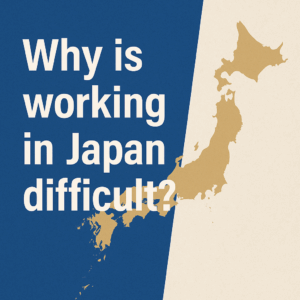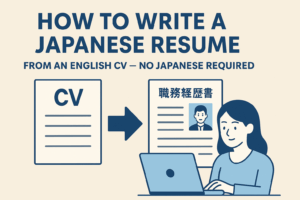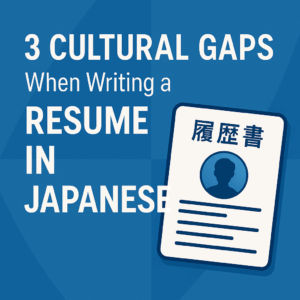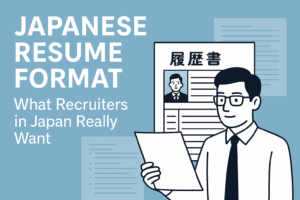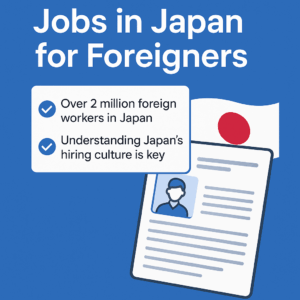Many people considering a move to Japan for work have the same concern:
“Aren’t work hours in Japan crazy long?”
It’s a common impression—and not entirely unfounded. Japan has long been known for its culture of overtime and “service残業” (unpaid extra hours). But in recent years, this narrative has started to shift.
Let’s take a closer look at what working hours in Japan actually look like today—and how much has changed.
Is Japan Still a Long-Hours Country?
For years, Japanese companies were notorious for keeping employees late into the evening. However, since the mid-2010s, there’s been a clear downward trend in average working hours—thanks to a combination of government reforms, demographic changes, and social pressure.
Government Reforms and Overtime Crackdown
In 2019, Japan enacted the Work Style Reform Law, capping legal overtime and requiring companies to manage work hours more responsibly.
Key changes include:
- Monthly overtime capped at 45 hours (with exceptions)
- Mandatory use of paid leave
- Encouragement of “no overtime” days
These policies have forced companies—especially large firms—to cut down on excessive work hours and better track employee schedules.
Check out this complete guide to jobs in Japan for foreigners . It covers industries, job types, and visa basics.
The Rise of Transparency and Social Pressure
The spread of social media has also played a role. Employees can now share their work conditions online, putting public pressure on so-called “black companies” (exploitative workplaces).
As a result, companies are more conscious of their reputation—and many now avoid overly harsh work environments to attract talent.
Labor Shortages Are Changing Power Dynamics
Japan is facing a major labor shortage, especially in IT, healthcare, and hospitality. This means companies are operating in a seller’s market, where job seekers have more leverage.
In this context, businesses are learning that no one wants to work for a black company—and those that don’t adapt are struggling to hire.
OECD Snapshot: Japan vs. Other Countries
According to the OECD 2023 statistics, Japan’s average annual working hours were 1,607—lower than the United States (1,811), and only slightly higher than countries like Germany (1,386) and France (1,402).
This marks a huge shift from past decades when Japan routinely topped the charts for longest workweeks.
Paid Leave and Sick Leave: Still a Weak Point
Despite shorter working hours, Japan still struggles with low paid leave usage. On average, Japanese workers only take about 60% of their entitled paid leave, and many companies lack formal sick leave policies.
However, Japan has one of the highest numbers of public holidays among developed countries―around 16 per year―which helps offset the low usage of paid leave. So in total, the average Japanese worker is not necessarily taking significantly fewer days off than their global peers.
Here’s a step-by-step guide to writing a Japanese resume (Shokumukeirekisho) that aligns with local expectations.
Evening Commutes Are Getting Lighter
One noticeable change is during rush hour. Compared to 10 or 20 years ago, trains are now less crowded later in the evening, and many commuters are heading home earlier—reflecting the shift toward more balanced working styles.
Japan Is Changing—But the Culture Shift Takes Time
Japan’s work culture is still transforming. While the laws have changed and working hours are dropping, some deep-rooted habits—like “face time” pressure or reluctance to take leave—persist, especially in traditional companies.
That said, younger companies, global startups, and many international firms based in Japan are leading the way in offering flexible, humane work environments.
Final Thoughts
If you’re worried about insane work hours in Japan, it’s worth doing your research—but you may be pleasantly surprised. The country’s labor environment is evolving quickly, and as a job seeker, you have more options than ever before.



